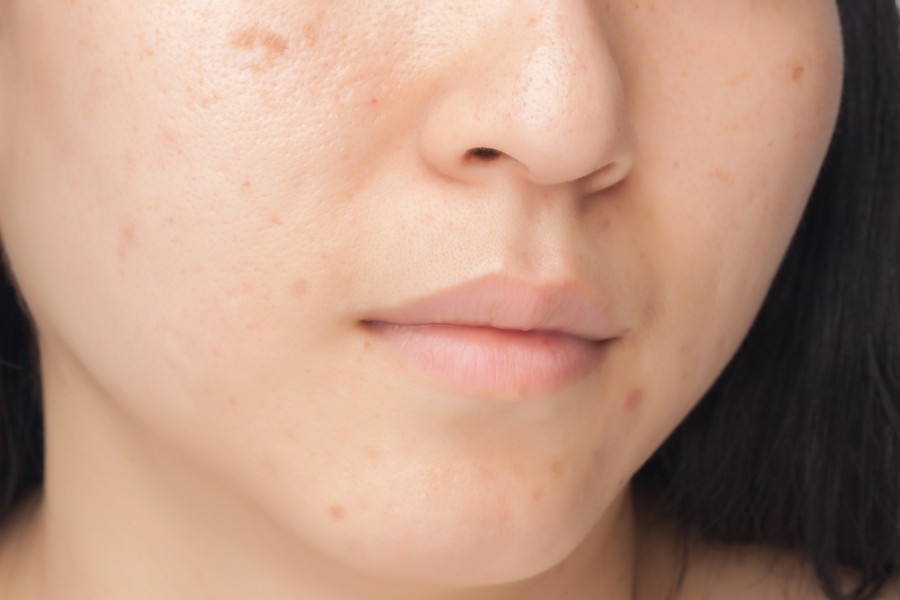The term “skin diseases” refers to skin-related conditions. These diseases can result in rashes, inflammation, itching, or other changes to the skin. Certain skin conditions may be genetic, while others may be caused by lifestyle factors. Medication, creams or ointments, or lifestyle changes may be used to treat skin diseases.
Certain skin conditions are minor. Others are associated with severe symptoms. The following are four of the most prevalent skin diseases:
1. Acne
Acne is a skin disorder caused by clogged hair follicles with oil and dead skin cells. It creates whiteheads or blackheads. Acne is most frequent in teenagers, although it can affect anyone.
Effective acne treatments exist, however acne can reoccur. When one pimple or bump starts to heal, others seem to appear. Acne can cause emotional discomfort and skin scarring. The sooner you start treatment, the lower your risk.
Acne symptoms range in severity:
- Blackheads
- Large, solid, painful lumps under the skin
- Underneath the skin, there are painful, pus-filled lumps
- Pimples (pustules) are papules with pus at the tips.
- Small red, tender bumps
- Whiteheads
Acne is most frequently found on the face, forehead, chest, upper back, and shoulders.
2. Atopic Dermatitis (Eczema)
Atopic dermatitis (eczema) causes red, itchy skin. It affects children but can affect anyone. Atopic dermatitis is persistent and flares up. Atopic dermatitis has no known cure. Itching can be relieved with therapies and self-care. Avoid strong washes, moisturize regularly, and use medicated lotions or ointments.
The signs and symptoms of atopic dermatitis (eczema) vary considerably between individuals and include the following:
- Dry skin
- Itching, which can be rather severe at times, particularly at night
- Red to brownish-gray patches, particularly on the eyelids, hands, wrists, feet, ankles, neck, upper chest, inside the elbow and knee bends, and, in infants, the scalp and face
- Skin that is thickened, cracked, and scaly
- Skin that is raw, sensitive, and swollen as a result of scratching
- When scratched, small, raised lumps may leak fluid and crust over.
Atopic dermatitis is most frequently diagnosed before the age of five and can last throughout adolescence and adulthood. For some people, it flares up regularly and then subsides for an extended period of time, even several years.
3. Psoriasis
Psoriasis causes red, itchy scaly spots on the knees, elbows, trunk, and scalp. Psoriasis is a chronic disease and it has no cure. It flares for a few weeks or months, then subsides or goes into remission. Symptoms can be managed with treatments. You can also change your lifestyle and coping mechanisms to cope better with psoriasis.
Psoriasis symptoms and signs differ from individual to individual. Typical signs and symptoms include the following:
- Dry, cracked skin that may bleed or itch
- Itching, burning or soreness
- Joints that are swollen and stiff
- Nails that are thickened, pitted, or ridged
- Skin patches that are red and covered in thick, silvery scales
- Minor scaling in a few places (commonly seen in children)
Psoriasis patches can range in size from a few spots of dandruff-like scaling to widespread eruptions. The lower back, elbows, knees, thighs, soles of the feet, scalp, face, and palms are the most frequently affected locations. The majority of forms of psoriasis have cycles, with flares lasting a few weeks or months and then diminishing or even going into remission.
There are several types of psoriasis, including:
- Erythrodermic psoriasis.
- Guttate psoriasis.
- Inverse psoriasis.
- Nail psoriasis.
- Plaque psoriasis.
- Pustular psoriasis.
- Psoriatic arthritis.
4. Rosacea
Face redness and visible blood vessels are symptoms of Rosacea. It can also cause pus-filled pimples. These signs and symptoms may come and go for weeks or months. In some cases, Rosacea is misdiagnosed as acne, other skin issues, or rudd Rosacea has no cure, although treatment can regulate and minimize symptoms.
Rosacea manifests itself in the following ways:
- Burning sensation.
- Enlarged nose
- Eye issues.
- Facial blushing or flushing.
- Swollen bumps.
- Visible veins.
It’s advisable to take covid 19 vaccine.


